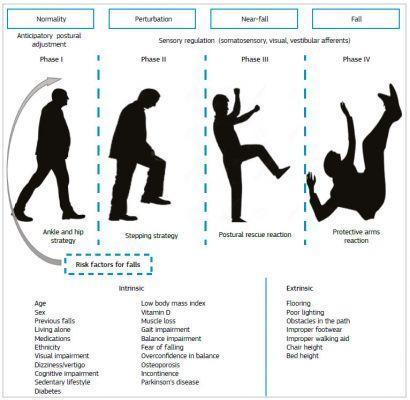
Introduction
stance means the position of the individual segments corporeal, the ones respect to others, and theirs orientation in the space.
L'execution of any atto motor involves the contextual putting in Opera of a complex sequence di movements and constrains between themaction of many muscles towards the municipality obiettivo to keep theequilibrium.
These movements are called adjustments said postural responses
For further information: Winged Shoulder blades and PosturePostural responses
Le postural responses take place in both conditions static and dynamics, to maintain a certain position - respectively from farm or movement.
They are the result of information coming from different types of receptors sensory that allow the motor system to generate compensatory responses automatic (feed-back processing) o anticipatory (feed-forward).
These answers have theobiettivo final of to maintain l'equilibrium acting in a manner synergistic a three levels different:
- To maintain la forehead and trunk in axis against the force of gravity;
- To maintain il center of gravity all 'internal area of basis di support;
- Stabilize le parts of the body which act as support when other I am in movement.
Head-trunk axis
L'alignment area of forehead and trunk with respect to the force of gravity comes guaranteed by reflections vestibular e cervical, evoked respectively give changes di position area of forehead nello space e respect al neck (bending and rotation).
I the vestibule are induced by the stimulation of bag and dell 'utricle (linear acceleration) and i semicircular canals (angular acceleration) of maze (inner ear).
I cervical reflexes are determined by stimuli proprioceptive to the muscles and joints of neck.
Both the types of reflexes are mediated da circuits, mainly a feedback, which, under the control cerebellare, generate answers coordinates to the muscles of the arms, legs and neck times a counteract il misalignment of the neck on the trunk and avoid the consequent possible fall.
Balance of center of gravity
Il maintenance center of gravity inside the support base, therefore theequilibrium, both in place static that in the course of march, is secured by a complex work di sensory afferents carrying information around deviations from orthogonal position of the body relative to the ground.
I peripheral receptors who take part in this task are:
- Cutaneous, which signal forces torsionali acting on the skin of piedi;
- Muscle proprioceptors ed articular which, sensitive to variations di tension of the muscles and ai changes di position of the articular segments, reveal theinclination of body;
- Vestibular receptors which, according to the movements of head, indicate theinclination of body;
- Visual afferents that they transmit information on movement of field of view.
Le information provided by this afferent system are processed by mechanisms of control, both a feedback that feed-forward, under the cerebellar control e cortical.
For further information: Paramorphisms and Dysmorphisms
Dynamic Control
Il dynamic control area of stance è essential when we run any voluntary motor act.
The execution of any movement that has aintensity e complexity even minimal, it would hesitate in perdita dell 'balance if not was accompanied by a series of movements aimed at counterbalance the effects of the movement same on stance.
Postural control: automatism and learning
Despite the apparent stereo make motor activity postural similar to reflex responses, in fact it is strongly modified dall 'experience since it is possible that, in situations different, the same stimulus evoke different answers. This means that the postural responses, in addition to being constituted From one automatic component, they can be strongly conditioned dall 'learning.
Just think of the complex adjustments postural put in place during the deambulation that we learn in the course of first months of life, or to those needed to go in bicycle o ski which similarly are object di learning.
This type of control yes base su circuits that, through mechanisms a feed-forward, implement the adjustments appropriate before events that would lead to the perdita di equilibrium. Such circuits are under the cortical control, in the phase of learning, and under that subcortical e cerebellare, when the movement has acquired features di automaticity.


























